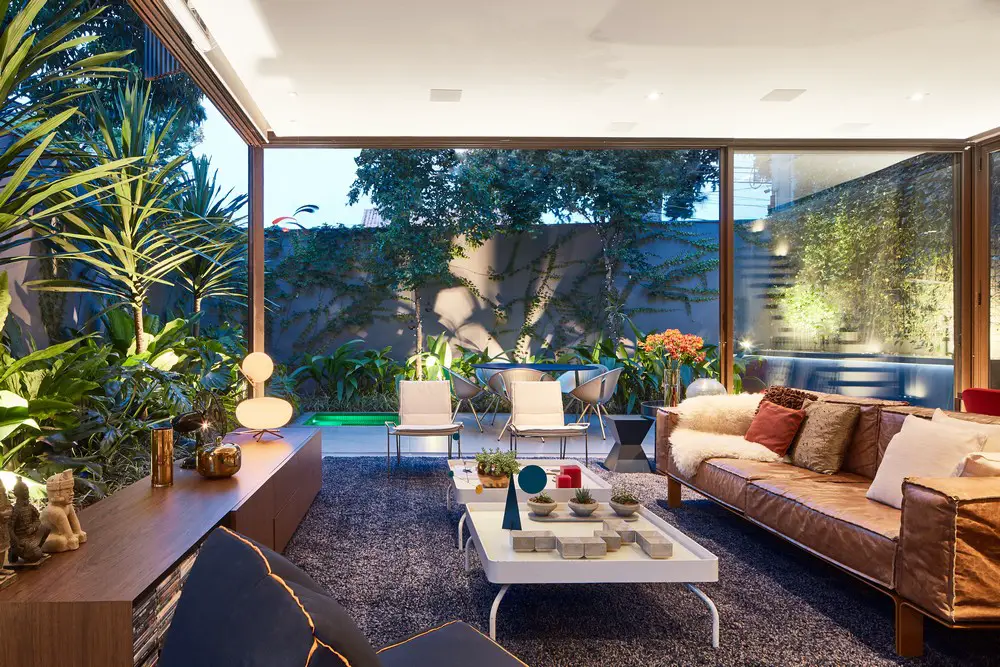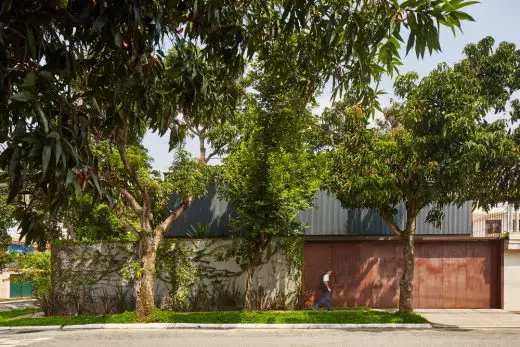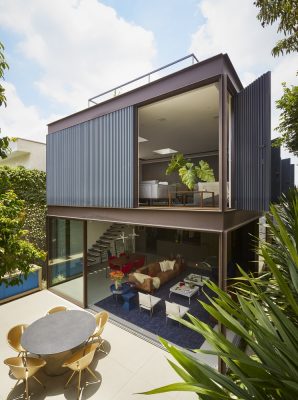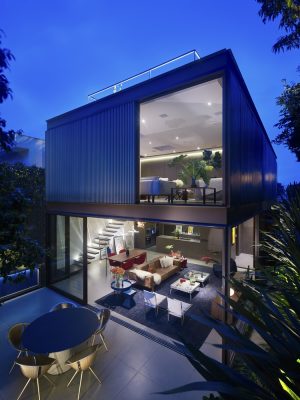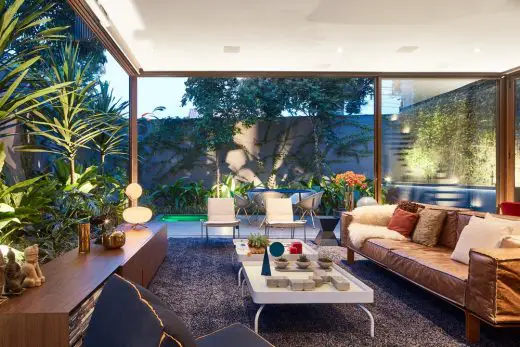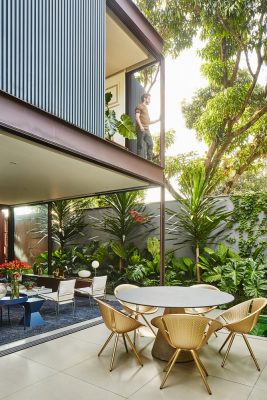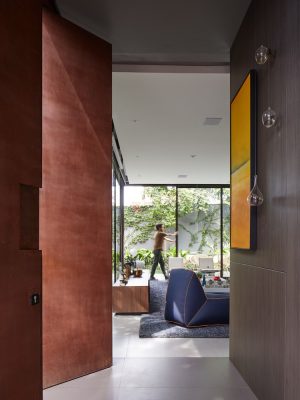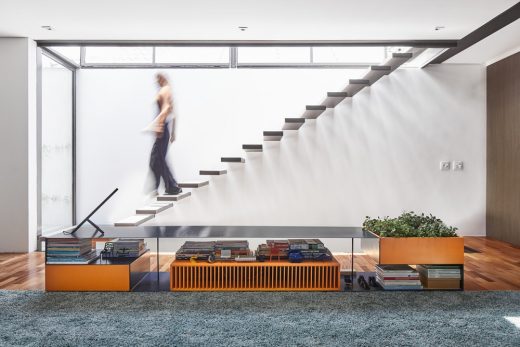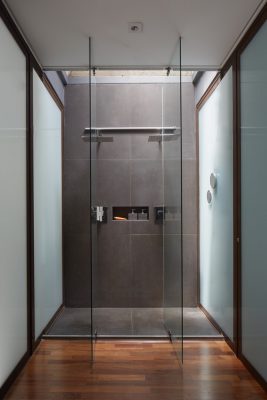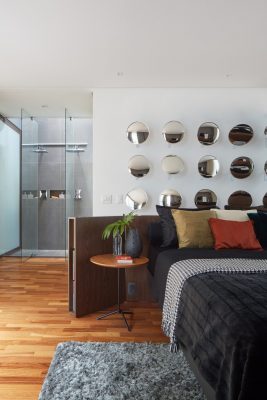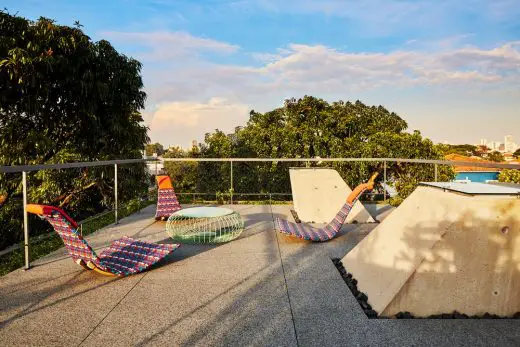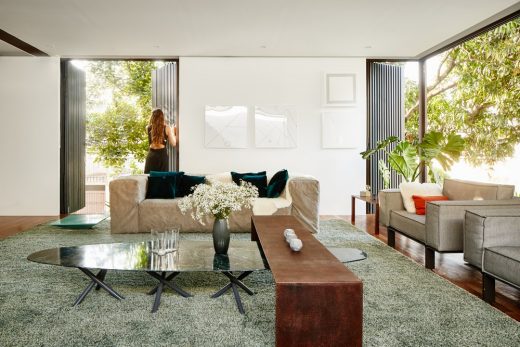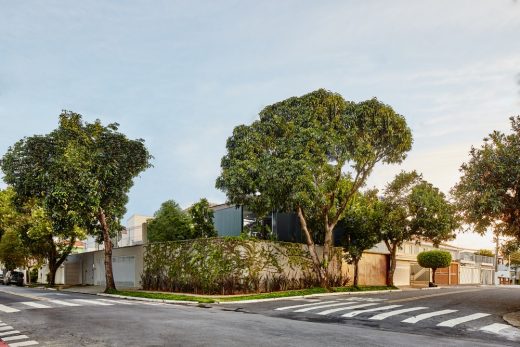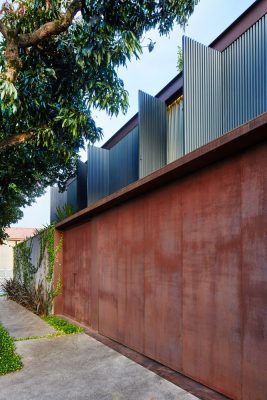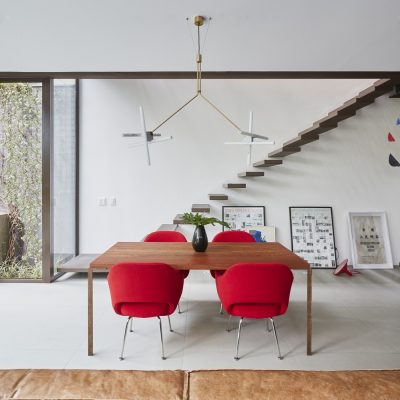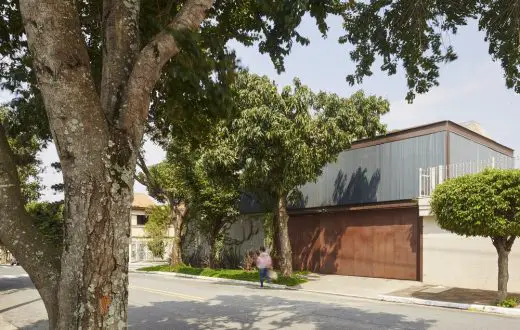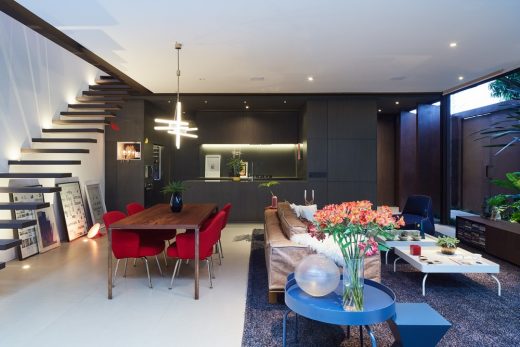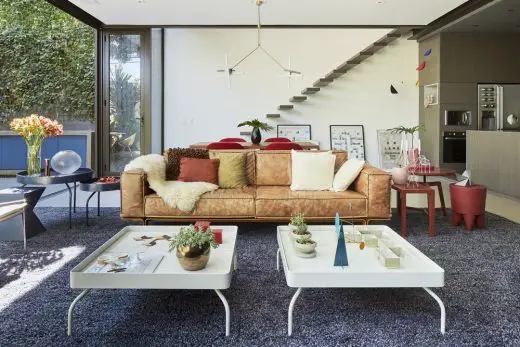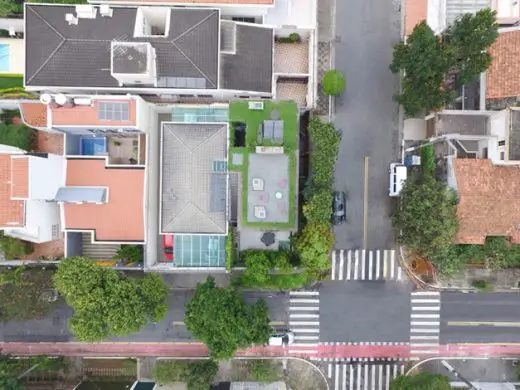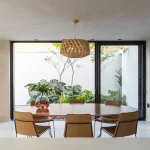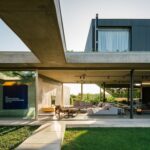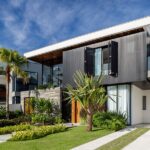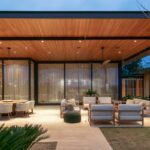Box House, São Paulo Real Estate, New Latin American Building Project, Architecture Images
Box House in São Paulo
Latin American Modern Interior and Architecture, Brazil design by FCstudio
8 Nov 2018
Box House São Paulo
Architects: FCstudio
Location: São Paulo, SP, Brazil
Box House, SP, Brazil
Located in the city of São Paulo, Brazil, the Box house was designed by a young architect, like a floating opaque box, to live in himself.
The main challenge was to build a corner house with two facades leaning against the neighbors, that took full advantage of the terrain and natural light, keeping privacy from the street as much as possible, and at the same time, dialogue with the volume of the existing block.
Therefore, Box House establishes three types of relationship with the immediate surrounding:
The ground floor can open fully so the tropical landscaping of the 10x20m terrain integrates into the inner space, where the boundary between inside and outside is diluted. The equilibrium is reached from the moment that the industrialized steel finds the organic vegetation in controlled proportions. It is worth mentioning that the ground floor is all free, except for the kitchen and toilet that function as a “functional island”, which separates the served and servant areas.
On the upper floor, the opposite occurs. The mutability of the façade permits be fully closed or open through mini-wave steel doors that block the direct sunlight, guarantee the privacy of the public street, enhance safety and acoustically isolate the intimate area (street noise and from the airport that is nearby). The material is justifiable by the resistance and great durability, (steel with electrostatic painting) without damaging the sustainability of the project, which guarantees intense internal natural ventilation.
The roof garden, on the third floor, works as an urban belvedere as it allows the observation of sunrise / sunset and surroundings from a high point in a neighborhood composed only by low houses.
The determination of the volumetric form was almost like a “fit” in the existing block, considering the heights of the neighbors and their setbacks to avoid unnecessary medians and showed respect to the context. We start from the maximum perimeter allowed by law and subtract the internal courtyard, the vertical circulation and the zenithal openings. Doing that, we guarantee natural lighting and ventilation to all spaces in the house, without exception, despite having two of its facades leaning against neighbors, without any openings.
The stairs serve as a range between the house itself and one of the neighbors. The intense light that comes from the glass cover and the recessed façade, creates a gap between the two houses, qualifying the spaces of permanence in all the floors. It was the artifice adopted to soften the inevitable touch between the two constructions and, in a respectful way, to deal with the existing context. In all other touch points with the neighbor, vertical gardens have been created.
The structure of the house is metallic, with the exception of slabs in concrete, because of the dimensional slender and constructive speed. The architect / habitant wanted to shorten the construction period because he was in a hurry to move. This fact was further strengthened by the adoption of prefabricated elements, although only 5% of houses in Brazil use this technique.
It is worth noting the two metallic pillars that make up the main vertices of the house, the cruciform pillars. This shape softens their presence by transforming the common visual mass of a pillar into slender vertical lines. This is further reinforced by the integration it has with the house framing.
The functionality of the house is based on the concepts of modern architecture. For a possible transformation in the future, the house already contains the necessary infrastructure for convert the upper living into two full suites.
Thus, the two existing zenithal openings would be responsible for the illumination and ventilation of these two possible toilets. The third opening, above the suite’s showers, allows the steam to escape and sunlight into the room. Each of them is “oriented” in a different way, making the solar intensity different and throughout the day, it changes.
The materials are sincere. Glass, wood, and steel are shown in their essence, without intermediaries. Interior decoration was also proposed by the same architect and establishes a harmonious dialogue with the architecture that he proposed.
The garden roof and raised floor contribute to the sustainability of the residence, as they cool the entire upper floor, important in a country with intense summer like Brazil. The water heating occurs through solar energy, the ventilation system is crossed, the large openings and the abundant landscaping proposed internally to the ground, externally in the public sidewalk and vertical gardens do with the box house is balanced energetically in its context.
It is a contemporary proposal discreet to the public eye, which respects the context, the climate and takes advantage of the beliefs of the architect / habitant to define spaces.
Box House, São Paulo – Building Information
Office: FCstudio
Box House in São Paulo images / information received 081118
Location: São Paulo, SP, Brasil
São Paulo Architecture
São Paulo Architectural Projects
São Paulo Architecture Designs – chronological list
São Paulo Architecture Walking Tours
São Paulo Houses Selection
Tetris House
Architecture: Studio MK27 – Marcio Kogan + Carolina Castroviejo. Interiors: Studio MK27 – Diana Radomysler
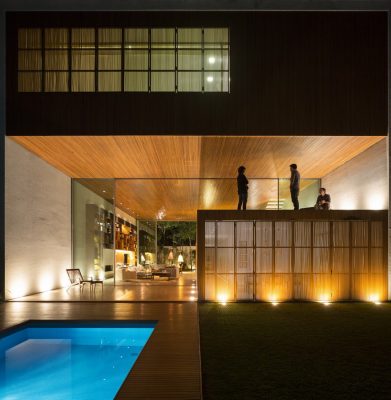
photograph : Fernando Guerra
Tetris House in São Paulo
Redux House
Architect: Studio mk27
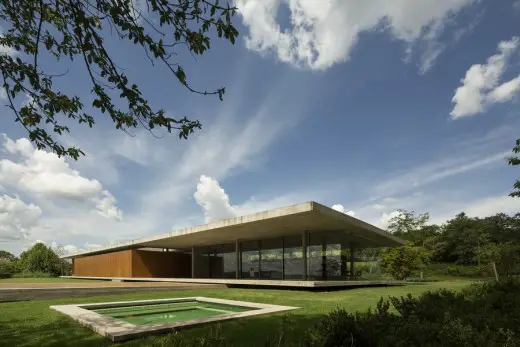
photograph : Fernando Guerra
Redux House in São Paulo
New Brazilian Architecture
Contemporary Brazilian Houses
Casa Mattos
Design: FGMF Arquitetos
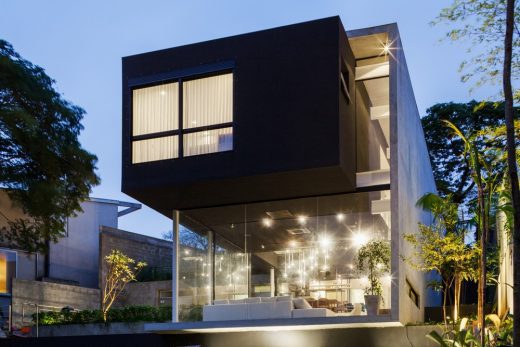
photograph : Rafaela Netto
São Paulo House by FGMF Arquitetos
Casa Lara in São Paulo, Jardim Paulistano
Design: Felipe Hess
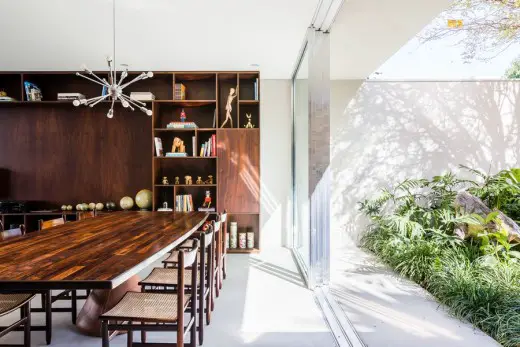
photograph : Ricardo Bassetti
Casa Lara in São Paulo
Comments / photos for the Box House in São Paulo page welcome
Website: São Paulo

